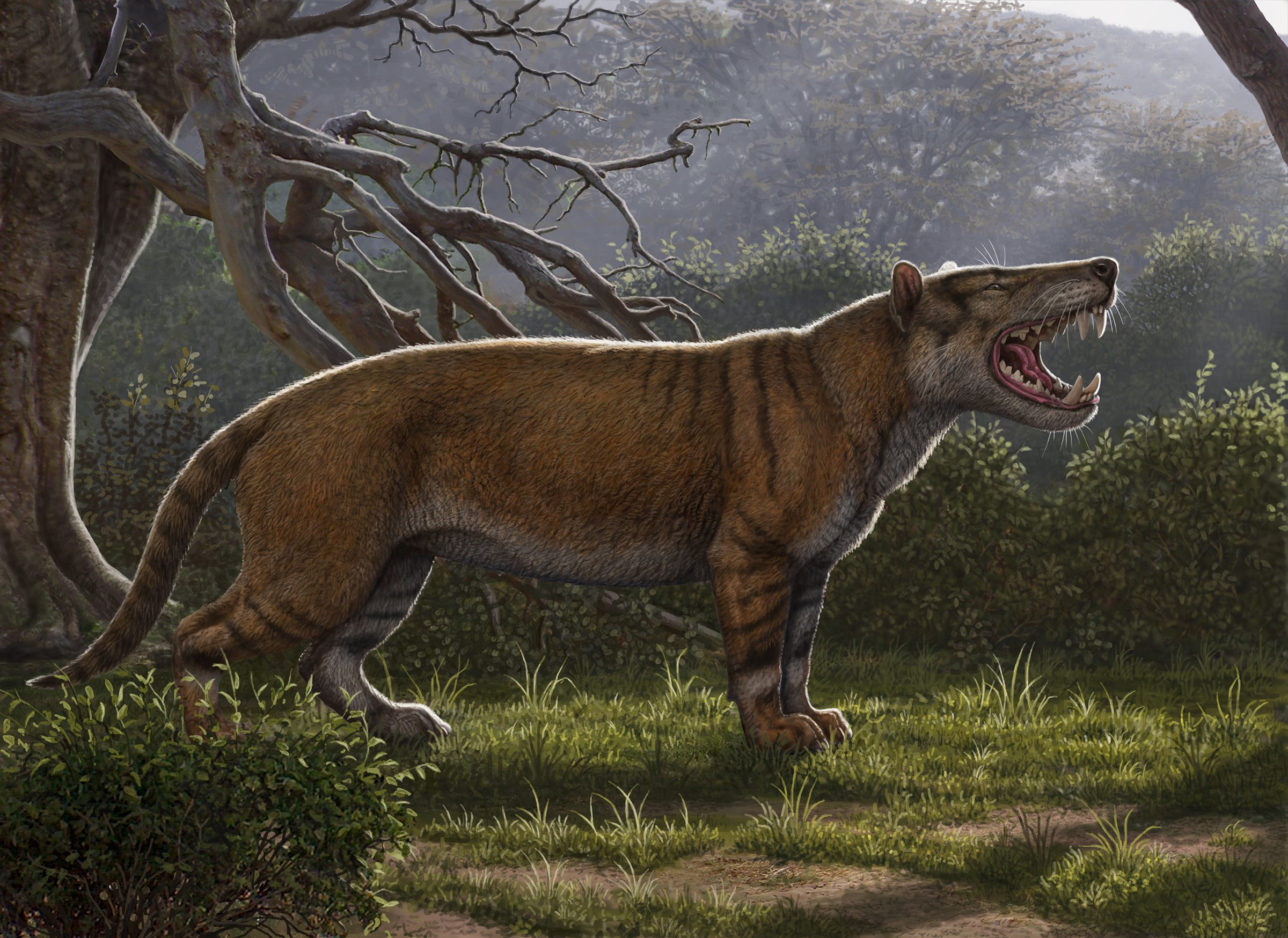Found: One of the Largest Carnivorous Land Mammals Ever, in a Museum Drawer
Despite its massive size, it had been overlooked for 40 years.

Museums are teeming with secrets, some of which will stay unknown or unknowable forever. But when researchers follow their curiosity, no mystery is safe. In this case it was two scientists who happened upon the same drawer, at the same museum in Kenya, three years apart.
Matthew Borths, curator of fossil primates at Duke University was researching hyaenodonts, ancient precursors of modern mammalian carnivores, six years ago at the Nairobi National Museum. In one drawer he came across a unique set of remains: mammalian cheekbones, teeth, jawbone fragments, and claws. He contacted a colleague at the University of Ohio, paleontologist Nancy Stevens, who revealed to him that she had also opened the same exact drawer years earlier, and was equally as intrigued. Since 2017, the pair have been analyzing the remains and just published their findings in the Journal of Vertebrate Paleontology. Turns out the fossils were as unusual as they expected, and belonged to one of the largest carnivorous mammals to ever walk the Earth.
The new species was dubbed Simbakubwa kutokaafrika, based on Swahili for “big cat from Africa.” However, this massive predator was no cat; its dental structure is more like that of a hyena. The species roamed the wilds of Kenya around 22 million years ago, sporting canines nearly four inches long, in a skull bigger than that of a rhinoceros, atop if a 3,000-pound body. (That’s about the same size the average female hippo.)

The remains were originally unearthed between 1978 and 1980 at Meswa Bridge, in western Kenya. However, the excavators were on the hunt for fossils of Miocene primates, so when they found the fossils of S. kutokaafrika, they simply put them in a drawer to be cataloged later. Nearly 40 years years, it turned out. “Imagine our surprise when first seeing this giant specimen! Across the globe, new species await discovery through the careful examination of museum collections,” says Stevens, who coauthored the study.
S. kutokaafrika shared a domain with the ancient relatives of hippos, rhinos, and elephants, and likely stalked them through patchy forests, says Borths. However, life changed for all those creatures as the continents continued to shift and change. “Africa slow-motion crashed into Eurasia, the East African Rift was rising up, and plants and animals isolated for millions of years in Eurasia and in Africa started to interact,” he adds via statement.
Relatives of S. kutokaafrika survived the disruption and crossed into Europe and India, where they became apex predators for millions of years until their extinction around 9,000,000 years ago, possibly due to shifts in climate and rain that impacted their prey.
According to Borths, the research highlights the importance of museums and their collections for comprehending deep history: “It’s a huge collaborative effort between researchers and museum staff and through that collaboration, we can glimpse past ecosystems.”









Follow us on Twitter to get the latest on the world's hidden wonders.
Like us on Facebook to get the latest on the world's hidden wonders.
Follow us on Twitter Like us on Facebook